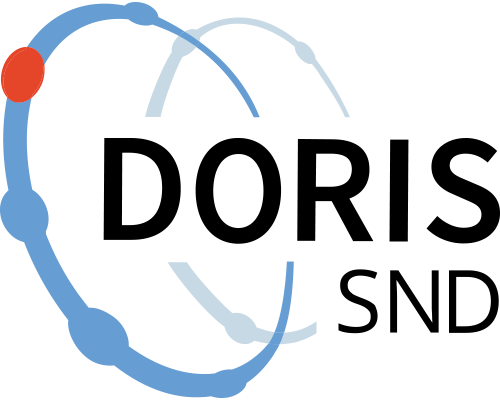Naturens kalender: Växtkalendern - fenologiska observationer av medborgarforskare
https://doi.org/10.5878/h4ez-wy68
Naturens kalender (www.naturenskalender.seÖppnas i en ny tabb) drivs av Svenska fenologinätverket, som är ett nätverk med flera universitet, myndigheter och föreningar. Sveriges lantbruksuniversitet (SLU) är nätverkets huvudman och ingår i universitetets miljöanalysverksamhet, tillhörande delprogrammet Klimat. Huvuduppgiften för Naturens kalender är att samla in observationer av vårtecken, hösttecken och annat i naturens kalender. Nätverkets verksamhet är i första hand kopplat till Sveriges miljökvalitetsmål Begränsad klimatpåverkan, men ingår även i europeiska (genom Pan-European Phenology database - PEP725) och intermationella (genom International Society of Biometeorology) samarbeten kring fenologisk forskning och miljöövervakning.
Data om naturens kalender samlas in på två olika sätt. Dels bedrivs en långsiktig miljöövervakning i form av ”kalendrar” där rapporter om fenologiska observationer samlas in över hela året, dels genomför vi korta ”kollar” där vi tar en ögonblicksbild av naturens kalender i landet vid en viss tidpunkt på året. Den långsiktiga miljöövervakningen genomförs av frivilliga och professionella medborgarforskare, s.k. fenologiväktare, i Växtkalendern (från 2008), Fågelkalendern (från 2016) och Bikalendern (2015-2018).
Motiv och syfte
Målet med Naturens kalender är att samla in data om allt från första vårtecken till sista hösttecken, så att vi kan erbjuda landsomfattande data till alla intresserade, för att underlätta forskning, miljömålsarbete och information, vilket kan göra oss bättre rustade att möta klimatförändringens effekter. Observationerna i Naturens kalender kan jämföras med motsvarande observationer som gjordes för över 100 år sedan (se Svenskt historiskt fenologidataset i "Relaterade forskningsdata"), för att upptäcka fenologiska förändringar över tid som kan bero på klimatförändringar. Data från Växtkalendern används exempelvis till uppföljningen av de svenska miljömålen genom miljömålsindikatorerna ”Växternas växtsäsong” och "Vårtecken" (www.slu.se/vaxternasvaxtsasongÖppnas i en ny tabb).
I Växtkalendern har medborgarforskare rapporterat in observationer av hur
- blomning
- lövsprickning
- barrträds skottskjutning
- bär- och fruktmognad
- fröspridning
- höstlövens färger
- lövfällning
utvecklas under växtsäsongen.
Datasetet innehåller en fil med observationsdata (plants_calendar_2008-2024.csv), en fil med artlistan som använts av observatörerna i rapporteringarna som ingår i detta dataset (totalt 1252 arter, se plants_calendar_specieslist_2008-2024.csv) och en fil med kompletta listan över de fenologiska faser som observatörerna kan rapportera (totalt 38 faser, se plants_calendar_phaselist_2008-2024.csv). Dessutom finns det tre dokument, dels en PDF-fil (metadata_plants_calendar_2008-2024.pdf) med metadata som beskriver hur ovanstående filer relaterar varandra samt beskriver ingående variabler, samt en PDF-fil (vaxtkalendern_fenologimanual_2021.pdf), som är den manual som s.k. fenologiväktare lovat följa (d.v.s. de som rapporterar med en högre kvalitet), och slutligen ett dokument med den nationella artskyddslistan (lista-nationellt-skyddsklassade-arter-20230612-uppdat-20240425.pdf). Observationsdatafilen innehåller totalt 166 396 observationer.
Observationsdatafilen kan användas fristående, övriga filer kan ses som kompletterande information för att förstå innehållet i denna (liksom att få fenologiska faserna i engelsk översättning).
Datainsamlingen i "Naturens kalender - Växtkalendern" påbörjades 2008, men ett antal observationer från enskilda observationsplatser som gjorts vid tidigare datum har också registrerats i databasen, varför observationsdatafilen innehåller enstaka observationer ända från 1980 t.o.m. 2024.
Koordinaterna för ett fåtal observationsplatser har gjorts diffusa, gällande observationer av skyddsvärda arter (avrundning till 1,5 decimaler = >6 km diffusion) i enlighet med reglerna för publik hantering av nationellt skyddade arter (se https://www.artdatabanken.se/var-verksamhet/fynddata/skyddsklassade-arterÖppnas i en ny tabb).
Datafiler
Datafiler
Dokumentationsfiler
Dokumentationsfiler
Citering och åtkomst
Citering och åtkomst
Tillgänglighetsnivå:
Skapare/primärforskare:
Forskningshuvudman:
Diarienummer hos huvudman:
- SLU.esf.2025.4.2.IÄ-1
Data innehåller personuppgifter:
Ja
Typ av personuppgifter:
Data innehåller koordinater som kan användas för att identifiera markägare, om de kombineras med andra datakällor. Data innehåller också ett observations-id, som kan härledas till personuppgifter om rapportören i de fall rapportören har ett registrerat konto på Naturens kalender.
Kodnyckel existerar:
Ja
Citering:
Metod och utfall
Metod och utfall
Datainsamling - Field observation
Datainsamling - Field observation
Geografisk täckning
Geografisk täckning
Administrativ information
Administrativ information
Ämnesområde och nyckelord
Ämnesområde och nyckelord
Relationer
Relationer
Versioner
Versioner
Metadata
Metadata
Versioner
Versioner
